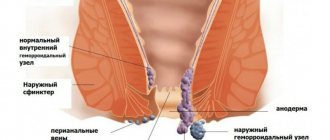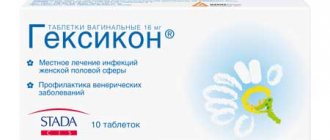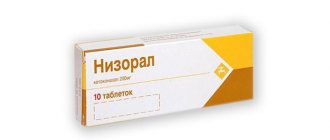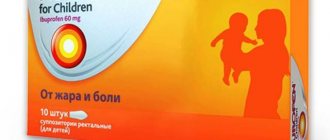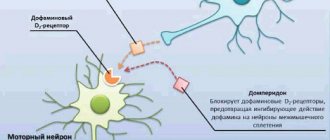Contraindications for use and features
The use of the drug is excluded in the following cases:
- pregnancy and lactation period;
- childhood;
- individual intolerance to one or more components of the drug;
- liver and/or kidney failure;
- hepatic porphyria.
It is important to take these conditions into account and under no circumstances use Barboval in therapy. Contraindications are not the only thing you need to know, since the drug also has special instructions
It should not be taken by people whose work requires increased attention and instant reactions, for example, drivers of cars and other vehicles. Barboval contributes to impaired coordination, causes drowsiness and dizziness, and helps to reduce mental and motor reactions, and it is important to take these points into account before starting treatment with this drug.
I have a very stressful job - chief accountant. Insomnia often occurs, and somehow I even developed a nervous tic. I come home nervous, I lash out at people close to me, which is why I’m always ashamed, but I can’t do anything. Against the backdrop of all this, I decided to choose a sedative. A friend recommended Barboval to me, because if you take it correctly, there are no adverse reactions. I’ve been taking courses of it for a year now, and you know, it really helps! I recommend it, especially since it has an affordable price!
Alice
Overdose and lethal dose
Excessive or prolonged use of the drug should be avoided as cumulative effects may occur in such cases. The result is the following clinical manifestations in case of overdose:
- depressant effect on the central nervous system;
- a drop in blood pressure, as well as the manifestation of nystagmus, ataxia and changes in the blood count.
In such situations, to eliminate the negative effects, it is necessary to use central nervous system stimulants, which include, for example, cordiamine or caffeine.
When Barboval is taken, an overdose can cause other negative effects. Taking the medicine for too long contributes to the development of bromism. With chronic toxic exposure to bromine, the following phenomena may appear:
- depressed and apathetic state;
- rhinitis;
- cases of conjunctivitis;
- diathesis of hemorrhagic nature;
- problems with coordination of movements.
To exclude these effects, symptomatic therapy is prescribed.
When the medication is abruptly stopped, withdrawal symptoms may occur. In some cases, long-term treatment with Barboval does not lead to the necessary sedation, but instead increases psychodynamic activity. To get rid of the consequences, symptomatic therapy is administered.
Patients' opinions
Most often, reviews about the drug “Barboval” are positive. People claim that the drug can extremely effectively eliminate the symptoms of neuroses. Many patients take drops in case of insomnia caused by stress. They testify that the drug allows them to fall asleep easily.
There are reviews about the drug "Barboval" in which people describe the occurrence of side effects. Most often, patients indicate excessive calmness, even some lethargy.
In general, analyzing people's opinions, we can conclude that the product is really effective. In most cases it is easily tolerated. The therapeutic effect after use occurs within 15-20 minutes.
Indications for use
for adults
Barboval is prescribed as a sedative and vasodilator for the following disorders:
- functional disorders of the cardiovascular system, including increased heart rate;
- insomnia;
- neurosis-like conditions, which are accompanied by increased irritability.
Barboval is used to relieve intestinal spasms.
for pregnant women and during lactation
Patients should not drink Barboval if they are pregnant or breastfeeding. It contains phenobarbital, the use of which in the 1st trimester of pregnancy can cause congenital deformities, and in the later stages provoke “withdrawal” in the newborn.
Instructions for use
Barboval drops are taken orally over 20-30 minutes. before meals. The recommended dosage for adult patients is 10-15 drops per 50 ml of water. The medicine can be dripped onto a small sugar cube and placed in the sublingual area of the mouth. Take 2-3 times daily. The specific dosage and regimen is determined by the attending physician.
Take 1-2 capsules up to 3 times a day based on the recommendations of a specialist.
After completing the course, it is often recommended to take a break for 10-15 days and then repeat the treatment. This ensures greater therapeutic effectiveness.
Indications for use
The drug Barboval is used to treat nervous system disorders. This is achieved due to the antispasmodic, vasodilating and sedative effects of the drug.
Among the indications for use it should be noted:
- nervousness;
- prolonged depression;
- hysteria;
- increased irritability;
- sleep problems;
- sinus tachycardia;
- attacks of angina pectoris (in the initial stages of the disease);
- spasms of the gastrointestinal tract;
- slight increase in blood pressure;
- flatulence.
The drug slows down the peristalsis of the stomach and intestines and has a relaxing effect on muscle muscles.
Overdose:
With prolonged or frequent use, cumulation of the drug may occur, which leads to clinical manifestations of overdose, namely: depression of the central nervous system, which is eliminated by the use of central nervous system stimulants (caffeine, cordiamine, etc.); nystagmus, ataxia, decreased blood pressure, deviations in the formula blood.
Manifestations of chronic bromine poisoning are: depression, apathy, rhinitis, conjunctivitis, hemorrhagic diathesis, impaired motor coordination. To eliminate these manifestations, symptomatic therapy is prescribed.
Constant long-term use of the drug can cause addiction, drug dependence, withdrawal syndrome, and sudden cessation of use can cause withdrawal syndrome. Long-term use of the drug is sometimes accompanied by increased psychodynamic activity instead of the expected sedation. Treatment is symptomatic.
Interaction with other drugs
Barboval, when taken simultaneously with tranquilizers and antipsychotics, potentiates their effects. Concomitant use with central nervous system stimulants reduces the effectiveness of each drug. Barboval is not recommended to be combined with drugs metabolized in the liver (indirect coagulants, sulfonamides, antibiotics, etc.), since phenobarbital, which is part of Barboval, has the ability to induce microsomal enzymes, which will lead to a decrease in the effectiveness of the drugs. Alcohol will increase the toxicity of Barboval and enhance its effects.
Side effects and interactions with other medications
Before using Barboval, it is important to consider that its effect is greatly enhanced when combined with antipsychotics, tranquilizers and other sedatives; and, on the contrary, decreases when combined with neurostimulants. The drug enhances the effect of local anesthetics, antihypertensive and hypnotic drugs, as well as analgesics
It is important to take into account that long-term use of Barboval, combined with the use of non-steroidal anti-inflammatory drugs, threatens the development of stomach ulcers and bleeding.
The drug enhances the effect of local anesthetics, antihypertensive and hypnotic drugs, as well as analgesics
It is important to take into account that long-term use of Barboval, combined with the use of non-steroidal anti-inflammatory drugs, threatens the development of stomach ulcers and bleeding.
Avoid simultaneous use with medications that contain gold, as there is a high risk of kidney damage. Barboval increases the toxic effect of Methotrexate and reduces the therapeutic effect of drugs metabolized in the liver.
During treatment, you should not drink alcoholic beverages, as they increase the toxicity of the drug and enhance its effect.
Instructions for use of Barboval describe the following possible adverse reactions of the body:
- from the gastrointestinal tract: nausea;
- from the central nervous system: drowsiness, dizziness;
- from the senses: lacrimation.
But such phenomena are extremely rare. It is enough to reduce the dosage or stop the drug, and any of the above reactions will pass.
I take everything to heart, I often get nervous and worry about even the smallest things. Because of this, I don't sleep well. Once I talked to a friend, she recommended Barboval to me, explaining that her grandmother took it, and the medicine helped cope with heart problems and insomnia. I don’t regret at all that I listened to my friend, because now I sleep like a baby and have become calmer, so I recommend
But it is important not to forget that medicine cannot be combined with alcohol!
Love
Drug interactions
Is it possible to use the drug "Barboval" together with other medications? The instructions for use (in drops and capsules this medicine is equally effective) informs that its combination with tranquilizers, antipsychotics and sedatives activates the action of the drug, and with neurostimulants it suppresses.
It should also enhance the effects of analgesics, antihypertensive, local anesthetic and hypnotic drugs.
Alcoholic drinks can increase the toxicity of the drug in question and enhance its effect.
Analogues of the drug
If you are allergic to one of the components of the drug, it becomes necessary to replace it. Today there are a large number of analogues of Barboval. The drugs may differ in price and composition from each other. However, they have a similar mechanism of action.
The most common and effective drug substitutes:
- Validol (7 rubles). The drug is based on levomenthol in menthyl isovalerate. This is one of the cheapest analogues of Barboval. Available in the form of lozenges. The drug begins to act in the oral cavity.
Its components have an irritating effect on the nerve endings located on the mucous membrane. As a result, a reflex expansion of blood vessels occurs. The drug helps eliminate pain, improve peripheral circulation, and has a sedative effect.
- Instenon (195 rub.). The combined product contains three main components: etophylline, hexobendine dihydrochloride, etamivan. It goes on sale in tablet form. Helps improve the metabolic process in the brain, has bronchospasmolytic and ionotropic diuretic properties, and has a stimulating effect on the nervous system. Taking the drug activates autonomic and cortical functions.
- Pumpan (242 rubles). The drug is available in the form of a solution and tablets. Contains several active ingredients, including those of plant origin: hawthorn, mountain arnica, lily of the valley, potassium carbonate and purple foxglove.
It has anti-ischemic, metabolic, hypotensive, cardiotonic effects. Stabilizes blood pressure, fibrinogen levels and heart rate, reduces the concentration of cholesterol in the blood, and promotes oxygen saturation of tissues.
Barboval can be replaced only with the permission of the attending physician, following his recommendations.
Properties of the drug
How does the drug "Barboval" work? The instructions for use (in drops and capsules, this medicine should only be prescribed by a doctor) states that its effectiveness is due to the properties of the substances that make up the medicine.
Ethyl ester of alpha-bromoisovaleric acid has antispasmodic, reflex and sedative effects. Such properties of the drug are due to irritation of the receptors of the nasopharynx and oropharynx, a decrease in the threshold of excitability in specific parts of the nervous system, as well as inhibition of vasomotor centers and activation of slowing processes in the subcortex and cerebral cortex.
Phenobarbital eliminates the excitation of the reticular formation of the brain. This promotes calming and hypnotic effects. Also, the mentioned substance suppresses the activity of vasomotor centers, lowers blood pressure and prevents vascular spasms.
As for validol, it has a sedative effect on the nervous system, suppresses peristalsis of the digestive system, eliminates flatulence and has a moderate antispasmodic and vasodilating effect.
It should also be noted that ethanol stimulates the action of all of the listed components.
Release form and composition
The main form of production and sale of the product is drops, which must be taken orally. The medicine is packaged in dropper bottles made of glass in a darkened form, followed by packaging in cardboard boxes. The container volume is 25 ml, 30 ml, 50 ml.
Drops in a volume of 1 ml include the following main components:
- Racemic solution of menthol in menthyl isovalerate – 80 mg. It has a calming effect with moderate vasodilating effects of a reflex type. Helps slow down the contraction of intestinal walls.
- Phenobarbital – 17 mg. It has a potentiating effect on the sedative effects of other components. Allows you to reduce the reactivity of the central nervous system and has a beneficial effect on the ability to fall asleep.
- Alpha-bromoisovaleric acid ethyl ester – 18 mg. This component has sedative and antispasmodic effects. They are implemented within the framework of a reflex circuit, i.e. are caused by a reflex formed under the influence of the active element on the nerve endings.
Additives from sodium acetate trihydrate are used as additional substances included in the composition. The composition contains rectified ethyl alcohol and water.
Sometimes the medicine is made in the form of white capsules with a butterfly pattern, but the image may be missing. The contents of the capsule are light powder. Capsules are packaged in blisters of 10 pcs. A paper pack may contain 1 or 2 blisters. Each capsule contains:
- components of menthol solution in the form of menthyl isovalerate – 46 mg;
- ethyl ether solution of alpha-bromoisovaleric acid – 10 mg;
- phenobarbital substance – 9.8 mg;
- additional elements in the form of castor oil, lactose monohydrate, microcrystalline cellulose with crospovidone, calcium stearate, silicon dioxide.
Packaging, form and composition of the sedative
Currently, the drug in question can be purchased in two different forms:
- Barboval solution (drops). The instructions for use state that the active elements of this medicine are liquid validol, phenobarbital, ethyl ester of alpha-bromoisovaleric acid. Rectified ethyl alcohol, sodium acetate trihydrate and water are used as auxiliary components.
The product mentioned above is sold in a dark glass bottle with a dropper stopper and first opening control.
- "Barboval" in capsules. The instructions for use indicate that the active ingredients of this form are the same substances that were listed above. In addition, the drug contains castor oil, microcrystalline cellulose, lactose monohydrate, calcium stearate, crospovidone and silicon dioxide.
Barboval capsules are white in color and have a butterfly pattern. They contain a homogeneous powder inside. The drug goes on sale in blisters.
Side effect
Usually, “Barboval” (drops) is well tolerated by patients. But in some cases, the use of this drug can lead to the development of side effects.
The medication instructions indicate the following number of possible negative effects:
- The cardiovascular system. In some patients, a slowdown in heart rate was observed - the development of bradycardia. Arterial hypotension may occur.
- Hematopoietic system. The occurrence of agranulocytosis, thrombocytopenia, as well as the appearance of anemia cannot be excluded.
- Nervous system. The use of drops may be accompanied by dizziness and headaches. Sometimes patients complain of increased drowsiness, decreased concentration, and slow psychomotor reactions. Some people experience feelings of fatigue, weakness and even confusion.
- Musculoskeletal system. Osteogenesis may be impaired. This phenomenon is observed as a result of long-term treatment with this drug.
- Digestive system. Drops can cause nausea.
- Respiratory tract. Sometimes there is difficulty breathing.
- Allergic manifestations. The medication may cause hives and rash. Some patients complain of itchy skin.
People who experience such negative effects from therapy are most often advised to reduce their dosage. In most cases, side effects go away without a trace.
General information about the drug
The medicine affects the central nervous system. Characterized by hypotensive, antispasmodic and sedative effects. It also has a positive effect on the quality of sleep and helps get rid of insomnia that occurs as a result of severe emotional stress.
It contains several active components that determine the mechanism of action. Like other drugs (hereinafter referred to as drugs), Barboval has its own characteristics of use and contraindications. Before taking it, you should get advice from a specialist.
Drug group, INN, scope of application
The medicine belongs to combination drugs with sedative and hypotensive properties. MNN: Barbovalum. Country of origin: Ukraine.
Widely used in the field of cardiology. Helps eliminate signs of neuroses and sleep disorders. In addition, this medication is used for flatulence and has a slowing effect on intestinal and stomach motility.
Release forms and average prices for the drug in Russia
The manufacturing company produces several dosage forms at once: drops and capsules. Thanks to this, each patient will be able to choose the most optimal option. Drops are sold in darkened bottles of 50, 30, 25 ml. Inside the capsules there is a white powder. The cardboard package contains one or three blisters (each containing 10 capsules).
The price of Barboval in drops is approximately 75 rubles per 25 ml. The exact cost and availability of other forms and dosages of the drug must be checked with representatives of pharmacies in your city.
| Pharmacy | Cost in rubles (25 ml) |
| Dialogue | 64 |
| 36,6 | 91 |
| Alexandrovskaya Pharmacy | 77 |
| GorZdrav | 73 |
| Wer.ru | 88 |
Compound
This drug is characterized by a combined composition. Manufacturers used the following as the main components:
- Racemic solution of menthol in menthyl isovalerate. One capsule contains 46 mg, and 1 ml – 80 mg. Penetrating into the body, it provides a sedative effect. Has moderate vasodilating properties. Under its influence, the production of endorphins and enkephalins begins.
- Phenobarbital. A solution of 1 ml contains 17 mg, capsules - 9.8 mg. Provides a sedative effect.
- Alpha-bromoisovaleric acid ethyl ester. In 1 ml of solution – 18 mg, in one capsule – 10 mg. The substance has an antispasmodic, sedative, reflex effect.
In the production process of capsules, auxiliary components were used: lactose monohydrate, castor oil, microcrystalline cellulose, calcium stearate, crospovidone, silicon dioxide. In addition to the main components, the solution contains water, ethyl alcohol (rectified), and sodium acetate trihydrate.
Pharmacodynamics and pharmacokinetics
The action of the drug is ensured by its main components. Penetrating inside the body, each of them performs its functions. As a result, a decrease in the excitability of the nervous system is recorded, and the increased activity of the vasomotor centers is inhibited.
Under the influence of a racemic solution of menthol, symptoms of flatulence are eliminated and gastric and intestinal peristalsis is slowed down. Thanks to phenobarbital, there is a decrease in excitation of brain structures.
Pharmacological effects of barbiturates
The drug also helps normalize high blood pressure and reduces the risk of vascular spasms. The medication contains ethanol. This substance enhances the effect of each of the components of the drug. Distributing throughout the body, the components have a therapeutic effect. They are characterized by a high rate of absorption that occurs in the stomach. About 40-60% binds to plasma proteins.
The metabolic process occurs in the liver. The half-life of substances from the body lasts from two to six days. The drug is excreted through the kidneys. About 30% comes out in its original form. If the drug is taken repeatedly, it accumulates, resulting in a much longer half-life.
pharmachologic effect
Pharmacodynamics. The effect of the drug is due to the action of its constituent components.
Ethyl ester of α-bromoisovaleric acid has a reflex calming and antispasmodic effect by irritating receptors in the nasopharynx and oral cavity, reducing the excitability of the central parts of the nervous system and enhancing inhibition processes in the subcortical structures of the brain. Also, the active substance inhibits the activity of vasomotor centers and has a local direct antispasmodic effect on smooth muscles.
A solution of levomenthol in menthylisovalerate (validol) has a calming effect on the nervous system, a moderate reflex antispasmodic and vasodilating effect. Reduces flatulence and slows down intestinal motility.
Phenobarbital suppresses the activating effect of the medulla oblongata centers on the cerebral cortex, as a result of which the excitation of brain structures decreases. Depending on the dose of phenobarbital, a sedative, hypnotic or tranquilizing effect is provided. Phenobarbital also inhibits the excitation of vasomotor centers, coronary and peripheral blood vessels, providing a decrease in blood pressure and preventing the development of vascular spasm (especially cardiac ones).
Ethanol, which is part of Barboval, enhances the effect of each component.
Pharmacokinetics.
The drug is quickly absorbed in the digestive tract. Partially oxidizes in the stomach. Excreted by the kidneys.
Release form and composition
The drug in most cases is available in the form of drops intended for oral administration. The packaging is a dropper bottle made of dark glass and packed in a cardboard box. The volume can vary: 25, 30 or 50 ml.
- 1 ml of the drug contains ethyl ester of a-bromoisovaleric acid in terms of 100% dry matter 18 mg; solution of menthol in menthyl ester of isovaleric acid (validol) 80 mg, phenobarbital 17 mg;
- excipients: sodium acetate trihydrate, ethanol (96%), purified water.
Less commonly, the drug is available in capsule form, which contains 10 mg of ethyl ester of a-bromoisovaleric acid, 9.8 mg of phenobarbital and 46 grams of menthol solution in menthyl isovalerate.
Barboval instructions and frequently asked questions
Stock
dyuchi speeches:
1 ml dilution of ethyl ester of α-bromoisovalerianic acid in 100% reconstituted rheuvin 18 mg, dilution of menthol in menthol ester of isovaleric acid (validol) 80 mg, phenobarbital 17 mg;
additional speeches:
sodium acetate trihydrate, ethanol (96%), purified water.
Medicinal form Oral droplets.
Main physical and chemical authorities:
Prozora is a barren countryside with a specific aromatic smell.
Pharmacotherapeutic group: Anesthetic and sedative drugs. Barbiturates, combinations.
ATX code N05C B02.
Pharmacological authorities
Pharmacodynamics.
Barboval is a combination of medicinal properties, the therapeutic action of which is based on the pharmacological powers of the components that are included in its composition.
Ethyl ester of α-bromosovalerianic acid
perform a reflex calming and antispasmodic action, which is caused by subdivisions of important receptors in the oral cavity and nasopharynx, decreased reflex alertness in the central parts of the nervous system and increased gallbladder processes murine in the neurons of the cortex and subcortical structures of the brain, as well as decreased activity of the central vascular centers and local direct antispasmodic action on smooth muscles.
Phenobarbital
suppresses the active influx of the centers of the reticular formation of the middle and middle cerebrum onto the cerebral cortex, thereby changing the flow of active influxes into the cerebral cortex and cerebral structures. Changes in active infusions cause, depending on the dose, sedative, tranquilizing and anesthetic effects. Barboval® changes the stress on the vascular centers, coronary and peripheral vessels, reducing the arterial pressure, contracting and anticipatory spasms of the vessels, especially the heart.
Validol
calmly flows into the central nervous system, enhances peristalsis of the vulva and intestines, reduces flatulence, and also has a calming reflex vasodilator and antispasmodic effect.
Ethanol
enhances the effects of skin components.
Clinical characteristics
Showing
Neuroses that are accompanied by excessive restlessness, insomnia; hysteria; at the warehouse of complex treatment of mild attacks of angina pectoris, arterial hypertension in the coronary stage, tachycardia of functional origin, with spasms of the bowel and intestines, flatulence.
Contraindicated
Increased sensitivity to any components of the drug, liver and liver failure, hepatic porphyria, severe heart failure, severe arterial hypotension, acute myocardial infarction, hepatic diabetes, depression, myasthenia, alcoholism, drug and medication addiction, respiratory disease from the buttocks, obstructive syndrome .
Interactions with other medicinal drugs and other types of interactions
Concurrent use of antipsychotics and tranquilizers potentiates, and with central nervous system stimulants, weakens the effect of the skin component of the drug. Barboval, which contains similar barbituric acid in its warehouse, enhances the action of local anesthetics, painkillers and analgesics. Alcohol will enhance the effects of the drug and may increase its toxicity. The drug is effective against aphids in the presence of valproic acid preparations. Presence in stock Barbovalu phenobarbital can induce liver enzymes, and thus interfere with the unnecessary use of medications that are metabolized in the liver (such as coumarin, griseofulvin, glucocorticoids, oral anti-inflammatory agents, cardiac glycosides, antimicrobial, antiviral, antifungal, anti-epileptic, anti-domestic, psychotropic, oral glucose-lowering, hormonal, immunosuppressive, cytostatic, antiarrhythmic, antihypertensive drugs, etc.), since their effectiveness will be reduced as a result of a higher level of metabolism.
MAO inhibitors prolong the effect of phenobarbital. Rifampicin may reduce the effect of phenobarbital.
When phenobarbital is ingested for one hour with gold preparations, the risk of irritation increases.
With a three-hour, one-hour infusion of phenobarbital with non-steroidal anti-inflammatory drugs, there is a risk of vulgaris infection and bleeding.
Simultaneous infusion of phenobarbital with zidovudine increases the toxicity of both drugs.
The drug increases the toxicity of methotrexate. Before taking the drug, there is no risk of alcoholic beverages
Features of stastosuvannya
The presence of phenobarbital in a drug store can lead to a risk of development of Stevens-Johnson and Lyell syndrome, which is most common in older patients. It is not recommended to avoid stagnation due to the unsafe development of medication retention, possible accumulation of bromine in the body and the development of bromine deficiency. In cases of seizures, if the heart does not heal after taking the drug, it is necessary to go to the doctor to turn off acute coronary syndrome. Use the drug with caution in case of arterial hypotension, hyperkinesis, hyperthyroidism, supraneural hypofunction, acute and persistent pain, acute intoxication with drugs.
Suspension during pregnancy or breastfeeding
The drug should not be given to women during pregnancy or breastfeeding.
The importance of influencing the fluidity of the reaction during treatment with vehicles or other mechanisms
The drug may cause drowsiness and confusion; therefore, during the treatment period, patients are not recommended to use unsafe mechanisms or transport means.
Method of congestion and dosage
Take it internally with a small amount of it, or put the peel under the tongue on a small piece.
The dosage and severity of treatment are determined by the doctor individually. Once grown, take 10-15 drops 2-3 times per meal for 10-15 days.
Take the drug 20-30 days before meals.
After a break of 10-15 days, the treatment course can be repeated.
Children
There is no evidence that the drug is used for the treatment of children, so the drug cannot be used in pediatric practice.
Overdose
With trivial or frequent ingestion, the drug may accumulate, which can lead to clinical manifestations of overdose, and itself:
· suppression of the central nervous system, which is affected by stagnation of central nervous system stimulants (caffeine, cordiamin, etc.);
· nystagmus, ataxia, decreased arterial pressure, changes in blood count.
Manifestations of chronic bromine deficiency are: depression, apathy, rhinitis, conjunctivitis, hemorrhagic disease, impaired coordination of the arms. To reduce the symptoms, symptomatic therapy is prescribed.
Chronic ingestion of the drug may cause withdrawal symptoms, drug retention, withdrawal syndrome, and rapt-induced ingestion - withdrawal syndrome. Trival administration of the inode drug is accompanied by increased psychodynamic activity instead of significant sedation.
Symptoms of overdose:
oppressed spirit, right down to your throat; suppression of the central nervous system, even to the point of coma; suppression of cardiovascular activity, including disruption of rhythm, decreased arterial pressure, even to the point of colaptoid state; tiredness, weakness, decreased body temperature, decreased diuresis.
Likuvannya
more symptomatic.
Adverse reactions
Make sure the drug is well tolerated. Possible development of adverse reactions:
on the side of the grass system:
constipation, due to heaviness in the epigastric dilation, with severe constipation - impaired liver function, nausea, vomiting;
on the side of the nervous system:
weakness, ataxia, impaired coordination of the arms, nystagmus, hallucinations, paradoxical awakening, decreased concentration of attention, fatigue, compatibility of reactions, headache, cognitive impairment, confusion there is confusion, drowsiness, slight confusion;
on the side of the organs hematopoiesis:
anemia, thrombocytopenia, agranulocytosis;
from the side of the cardiovascular system:
arterial hypotension, bradycardia;
on the side of the immune system:
hypersensitivity reactions, including angioedema, allergic reactions (including skin visip, itching, kropivyanka);
from the side of the skin and mucous membranes:
Stevens-Johnson syndrome, toxic epidermal necrolysis;
on the side of the musculoskeletal apparatus:
in cases of severe stagnation, replacing phenobarbital poses a risk of impaired osteogenesis;
more:
difficult breathing.
Trivalium taking drugs,
Taking bromine can lead to bromine deficiency, which is characterized by the following symptoms: depression of the central nervous system, depressed mood, fluid confusion, ataxia, apathy, conjunctivitis, rhinitis, lacrimation, acne or purpura .
Term of attachment3 rocks.
Do not pack the drug after completing the terms of reference indicated on the package.
Umovi sberіgannya
Store in original packaging at a temperature not exceeding 25 °C.
Keep out of the reach of children.
Package
25 ml per bottle. 1 bottle per patient.
Category of release Without prescription.
Virobnik
PJSC "Farmak"
Location of the distributor and addresses of the location of its activities
Ukraine, 04080, m. Kiev, st. Frunze, 63.
Overdose
Overdose is possible with prolonged use in large quantities. In this case, the following symptoms will appear:
- a feeling of nausea that leads to vomiting;
- in some cases the blood formula changes;
- severely dizzy, constantly falling asleep;
- severe weakness of the whole body;
- blood pressure decreases;
- the nervous system is depressed;
- lacrimation.
With particularly long-term use, dependence on the drug may occur; abrupt cessation of use may result in withdrawal syndrome. In such cases, you should immediately consult a doctor, he will prescribe symptomatic treatment.
Also, with prolonged use of the drug, bromism may occur. Chronic intoxication with bromine is manifested by depression and apathy, hemorrhagic diathesis, rhinitis and conjunctivitis, and impaired coordination of movements. To eliminate negative consequences, symptomatic therapy is carried out.
Application Features
The presence of phenobarbital in the drug may lead to the risk of developing Stevens-Johnson and Lyell syndrome, which is most likely in the first weeks of treatment. Long-term use is not recommended due to the risk of developing drug dependence, possible accumulation of bromine in the body and the development of bromine poisoning. In cases where pain in the heart area does not go away after taking the drug, you should consult a doctor to rule out acute coronary syndrome. The drug should be prescribed with caution for arterial hypotension, hyperkinesis, hyperthyroidism, adrenal hypofunction, acute and persistent pain, acute drug intoxication.
Instructions for use of Barboval, dosage
Barboval drops are taken 20–30 minutes before meals, orally (the required number of drops is diluted in 50 ml of water), or under the tongue (dropped onto a piece of sugar). Dosages and duration of treatment are determined by the doctor individually depending on the indications.
In the absence of other prescriptions, a single dosage for adults is 10–15 drops. The frequency of administration is 2–3 times a day, the duration of treatment is 10–15 days. After a break of 10–15 days, the course of treatment can be repeated.
Side effects
Prescribing Barboval may be accompanied by the following side effects:
- decreased concentration,
- drowsiness,
- low pressure,
- slow heart rate,
- very rarely - allergies, asthenic condition.
Side effects are eliminated by reducing the dosage. If used for a long time, dependence and bromism may occur.
When taken simultaneously with tranquilizers and neuroleptics, their effect is potentiated. Concomitant use with central nervous system stimulants reduces the effectiveness of each drug.
Alcohol increases the toxicity of Barboval and increases side effects.
Contraindications
It is contraindicated to prescribe Barboval in the following cases:
- hypersensitivity to any components of the drug;
- severe liver and/or kidney failure;
- alcohol addiction;
- traumatic brain injury or brain disease;
- age under 18 years;
- pregnancy and lactation.
Overdose
In case of overdose, suppression of central nervous system activity, weakness and dizziness, drowsiness, vomiting and nausea may occur. Treatment is symptomatic.
Barboval. 7 beneficial properties and contraindications
Barboval is a medical drug that contains ethyl ester of alpha-bromoisovaleric acid (spamolytic), phenobarbital (has a vasodilator and sedative effect) and liquid validol (calms the central nervous system). The medication has sedative, antispasmodic and hypotensive properties.
Unlike Corvalol, Barboval has a longer lasting effect. It is prescribed for hysteria, insomnia, neuroses accompanied by irritability, angina pectoris, tachycardia, flatulence and spasms of the gastrointestinal tract.
The drug is sold in pharmacies in the form of drops, but the drug can also be purchased in capsule form. It can be diluted in water or dripped onto sugar and dissolved under the tongue. Of course, the dosage is prescribed to each person individually, and it can only be increased after consultation with your doctor.
Often the dosage is prescribed no more than 10-15 drops at a time. The drug should be taken 2-3 times a day 30 minutes before meals. The duration of the course is 10-14 days, after which take a break. Which lasts 10-14 days and repeats the course of therapy again.
Often the drug is easily tolerated, but there are cases when using high dosages when dizziness, drowsiness, lacrimation and even nausea were observed. If such symptoms appear, it is necessary to immediately reduce the amount of drug use.
This drug is contraindicated for women during breastfeeding, children and patients who have individual intolerance and hypersensitivity to certain components of the drug Barboval. It should be remembered that when taking the drug it is not recommended to drink alcoholic beverages, because alcohol enhances the effect of barboval and increases its toxicity.
In case of an overdose of the drug, the following symptoms are observed: dizziness, nausea, vomiting, general weakness of the body. If such a reaction occurs, you should immediately stop taking the medication or reduce the dosage.
Also remember that when prescribing the drug to patients who have contact with moving mechanisms or drive vehicles, you should be as careful as possible.
How to use Barboval
Barboval is available in the form of a solution that is taken orally, that is, inside. A single dose for adult patients is 10-15 drops of the drug, the frequency of administration is 2-3 times during the day. It is recommended to take the medicine before meals, preferably 20-30 minutes before, with a small amount of drinking water. It is also possible to drop the product onto a piece of sugar and place it under the tongue until completely dissolved.
Before taking Barboval, you should consult a doctor who will prescribe the exact dosage and duration of treatment depending on the type and severity of the disease.
From reviews of Barboval it is known that the best result is achieved if you take a break of two weeks between courses.

